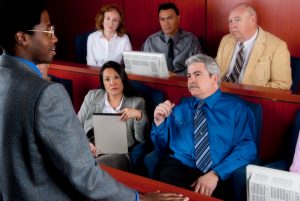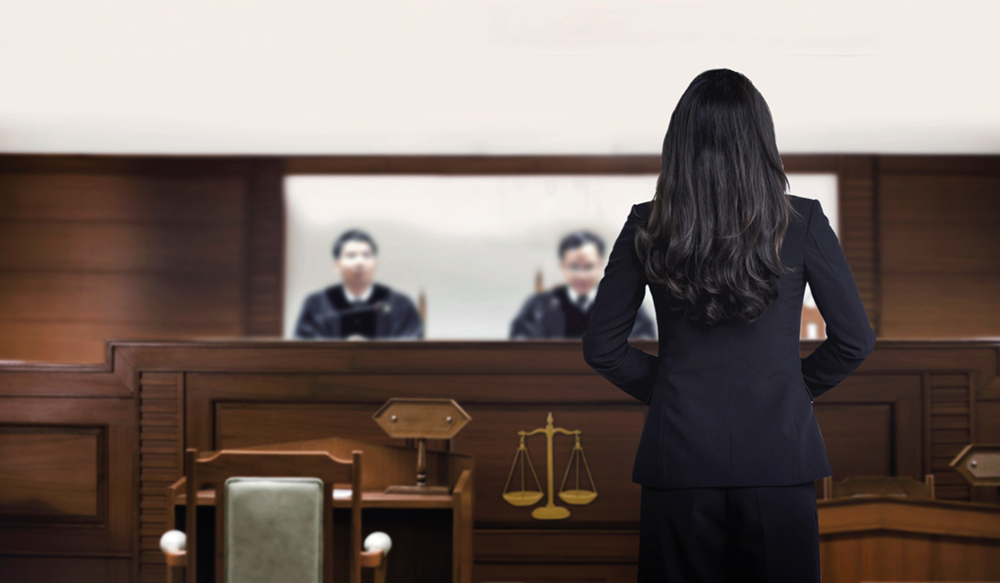From Concept to Courtroom: Actions to Create Effective and Persuading Trial Presentations
From Concept to Courtroom: Actions to Create Effective and Persuading Trial Presentations
Blog Article
Browsing the Complexities of Trial Presentations: Tips for Seamless Delivery and Compelling Debates
In the world of legal process, the art of test discussion stands as an important determinant of success. As lawyers navigate the complex web of court dynamics, the ability to seamlessly provide arguments and proof while captivating the court's attention becomes paramount. The intricacies inherent in trial discussions require a delicate equilibrium of ability, finesse, and method. By honing techniques that make sure a sleek delivery and crafting compelling disagreements that reverberate with the target market, attorneys can substantially boost their campaigning for. In a world where persuasion reigns supreme, grasping the ins and outs of test discussions is not merely an option but a requirement for those seeking to dominate in the court.

Understanding Trial Goals
To successfully browse a test, it is essential to have a clear understanding of the goals that need to be accomplished. Prior to tipping right into the court room, legal teams should define their goals and preferred results. These goals work as assisting concepts throughout the test, forming approaches and affecting decision-making processes.
Recognizing test purposes entails a thorough evaluation of the instance, lawful criteria, and the customer's benefits. Trial Presentations. It needs a careful assessment of the truths, determining essential issues, and anticipating potential obstacles. By establishing certain and measurable objectives, lawyers can tailor their arguments and presentations to line up with the desired outcomes
In addition, a clear understanding of trial purposes makes it possible for legal teams to focus on evidence, witnesses, and legal debates successfully. It enables the development of a systematic story that resonates with the discretionary, strengthening the total situation presentation.

Organizing Evidence Effectively
Having a clear understanding of trial purposes lays the structure for organizing proof properly in legal proceedings - Trial Presentations. By straightening the discussion of evidence with the wanted end results of the trial, legal groups can strengthen their debates and boost their persuasiveness. One important aspect of arranging evidence is categorization. Organizing evidence based upon styles or relevance to details legal components can assist streamline the discussion and make complex details a lot more digestible for the court or jury.
An additional crucial element in organizing proof effectively is developing a sensible flow. Offering evidence in a sequential and meaningful fashion can help develop an engaging narrative that sustains the lawful arguments being made. Furthermore, making use of visual aids such as charts, charts, or timelines can additionally boost the organization of evidence and help in making clear intricate relationships or my company sequences of occasions.
In addition, making sure that all proof presented is admissible and appropriate to the case is important. Inadmissible or unnecessary evidence can diminish the strength of the disagreement and potentially hurt the integrity of the here and now party. Therefore, a precise evaluation and choice process ought to be embarked on Extra resources to consist of just the most impactful and lawfully sound evidence in the trial presentation.
Crafting Convincing Narratives
Crafting engaging stories plays an essential function in offering convincing arguments throughout legal procedures. When constructing a story for a trial presentation, it is essential to develop a clear storyline that highlights crucial points and attaches them in a coherent fashion. By weaving together proof, testimony, and legal debates into a natural and persuasive narrative, legal specialists can efficiently support for their clients and enhance the chance of a beneficial end result in the courtroom.
Grasping Aesthetic Help
Effective usage of aesthetic help is key to improving the influence and clarity of trial presentations. Aesthetic help, when utilized strategically, have the power to simplify complicated details, reinforce bottom lines, and leave a long-term impact on the judge and jury. To grasp visual help in check out here test discussions, it is crucial to guarantee that they are clear, concise, and appropriate to the disagreements being made.
When including aesthetic help, such as graphes, photographs, timelines, or graphs, into a trial presentation, it is important to keep them visually appealing yet professional. The visuals ought to complement the verbal arguments, giving a visual representation of the information being talked about without overwhelming the audience with unneeded information.
In addition, exercising with the aesthetic aids in advance is necessary to make certain a smooth shipment during the trial. Acquainting oneself with the web content, shifts, and timings of each visual aid can aid keep the flow of the presentation and prevent technological problems that may arise.
Supplying Impactful Closing Debates
A compelling closing debate serves as the end result of a trial discussion, enveloping the core narrative and convincing the court and jury in the direction of a favorable choice. Begin by laying out the primary debates that support your client's placement, emphasizing why the evidence offered throughout the trial supports your story.
In addition, integrating psychological appeal can even more enhance your closing debate. Inevitably, a well-crafted closing debate should leave a lasting impression, compelling the judge and jury to rule in your customer's support.
Verdict
To conclude, understanding test discussions entails recognizing purposes, arranging proof, crafting narratives, utilizing visual help, and supplying impactful closing debates. By applying these approaches properly, legal representatives can provide their situation perfectly and make compelling arguments in the court room. It is critical to browse the complexities of trial discussions with accuracy and skill to achieve success in lawful procedures.
By lining up the presentation of proof with the preferred outcomes of the test, lawful teams can strengthen their debates and improve their persuasiveness (Trial Presentations). To master aesthetic help in trial discussions, it is vital to guarantee that they are clear, concise, and pertinent to the disagreements being made
An engaging closing disagreement serves as the end result of a trial discussion, enveloping the core narrative and encouraging the judge and court towards a favorable choice. Begin by outlining the major disagreements that sustain your client's placement, highlighting why the proof provided throughout the test supports your story.In conclusion, understanding trial discussions involves recognizing objectives, arranging evidence, crafting narratives, making use of visual help, and delivering impactful closing disagreements.
Report this page